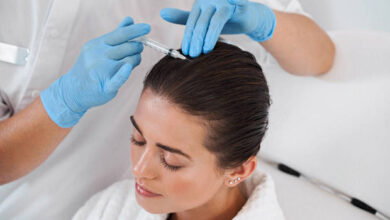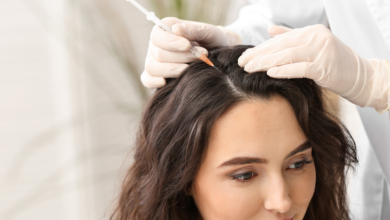
In today’s society, the concept of beauty and self-image holds significant importance. With hair loss being a common issue faced by many individuals, hair transplantation has emerged as a potent solution. This article delves into the impact of hair transplantation, shedding light on its efficacy, various techniques, and the advancements made in the field. By comprehending the transformative power of hair transplantation, you will gain a renewed understanding of how it can enhance one’s self-esteem and restore confidence.
Introduction
Hair loss can have a significant impact on an individual’s self-esteem and overall quality of life. For those who are seeking a solution to their receding hairlines or thinning crowns, hair transplantation offers a promising option. This procedure involves the transfer of healthy hair follicles from one part of the body, known as the donor site, to the recipient site where hair growth is desired. In this comprehensive article, we will delve into the world of hair transplantation, exploring its historical background, different procedures, the process itself, factors affecting results, benefits and advantages, potential risks and side effects, post-transplantation care and maintenance, and the ideal candidates for this life-changing procedure.
What is Hair Transplantation?
Definition
Hair transplantation is a surgical procedure that aims to restore hair growth in areas where there is hair loss or thinning. The procedure involves the extraction of healthy hair follicles from a donor site, typically the back or sides of the scalp, and their transplantation to the recipient site, where hair growth is desired. By utilizing one’s own hair follicles, hair transplantation provides a natural and permanent solution to hair loss.
Historical Background
The concept of hair transplantation dates back to the 19th century, with early attempts involving the use of punch grafts. However, it was not until the 1950s that modern hair transplantation techniques began to take shape. Dr. Norman Orentreich, a dermatologist, introduced the concept of “donor dominance,” which laid the foundation for contemporary hair transplantation practices. Over the years, advancements in surgical techniques, tools, and technologies have led to more refined and effective procedures, revolutionizing the field of hair restoration.

Types of Hair Transplantation Procedures
Follicular Unit Transplantation (FUT)
Follicular Unit Transplantation, commonly known as FUT or strip harvesting, is one of the traditional methods of hair transplantation. This technique involves the removal of a small strip of skin from the donor site, which is then dissected into individual hair follicular units under a microscope. These follicular units, consisting of one to four hairs, are then meticulously transplanted into the recipient site. FUT allows for the transplantation of a larger number of grafts in a single session, making it suitable for individuals with extensive hair loss.
Follicular Unit Extraction (FUE)
Follicular Unit Extraction, or FUE, is a more modern and minimally invasive technique of hair transplantation. Unlike FUT, which involves the removal of a strip of skin, FUE involves the extraction of individual hair follicles directly from the donor site using a specialized instrument. These hair follicles are then transplanted into the recipient site. FUE leaves tiny, circular scars that are less noticeable compared to the linear scar resulting from FUT. This technique is favored for its quicker recovery time, reduced postoperative discomfort, and the ability to selectively harvest hair follicles, making it suitable for individuals with smaller areas of hair loss.
Robotic Hair Transplantation
Robotic hair transplantation is a cutting-edge advancement in the field of hair restoration. This technique utilizes robotic technology to assist in the extraction and transplantation of hair follicles. The robotic system uses artificial intelligence algorithms to identify and harvest individual follicular units, increasing the precision and efficiency of the procedure. Robotic hair transplantation offers enhanced accuracy and reproducibility, reducing the risk of human error. However, it is important to note that the robotic system is an aid to the surgeon rather than a completely autonomous procedure, with the surgeon still playing a crucial role in planning and executing the transplantation.
The Process of Hair Transplantation
Consultation and Evaluation
The journey of hair transplantation begins with a comprehensive consultation and evaluation with a qualified and experienced hair transplant surgeon. During this initial meeting, the surgeon will assess the extent of hair loss, evaluate the quality and density of the donor hair, and discuss the patient’s expectations and desired outcomes. Factors such as the patient’s age, overall health, and medical history will also be taken into consideration to determine the suitability of the individual for the procedure.
Preparation and Planning
Once the patient has been deemed a suitable candidate for hair transplantation, the surgical team will proceed with the necessary preparations. This typically involves the administration of local anesthesia to ensure a comfortable procedure for the patient. The surgeon will then meticulously plan the placement and distribution of the hair follicles to achieve a natural and aesthetically pleasing result. The hairline design is of particular importance, as it plays a significant role in framing the face and determining the overall appearance.
Procedure Execution
With the preparations complete, the surgeon will proceed with the extraction of hair follicles from the donor site. The specific technique used, whether FUT, FUE, or robotic transplantation, will determine the method of extraction. Once the follicles have been harvested, they are meticulously transplanted into the recipient site, paying close attention to the angles, direction, and density to ensure a seamless integration with the existing hair. The procedure, which can take several hours to complete, is performed with utmost precision and care.
Recovery and Post-Operative Care
Following the hair transplantation procedure, the patient will be provided with detailed post-operative instructions to facilitate a smooth recovery and optimal results. The recovery period may vary depending on the individual, with most individuals experiencing some mild swelling, redness, and scabbing in the recipient and donor areas. It is crucial to follow the prescribed medication regimen and care instructions to minimize the risk of infection and promote healthy healing. The surgeon will schedule follow-up visits to monitor progress and address any concerns or questions that may arise during the recovery process.

Factors Affecting Hair Transplantation Results
The success and efficacy of a hair transplantation procedure can be influenced by various factors. Understanding these factors is essential for both patients and surgeons to manage expectations and achieve the desired results.
Donor Hair Quality and Quantity
The quality and quantity of the donor hair play a pivotal role in the outcome of hair transplantation. Hair follicles from the donor site should possess the necessary characteristics, such as thickness, strength, and natural growth pattern, to ensure optimal results. The availability of an adequate number of grafts is also crucial, as it determines the coverage and density that can be achieved.
Recipient Site Condition
The condition of the recipient site, including the quality and vascularity of the scalp, can affect the success of hair transplantation. Individuals with a healthy scalp and suitable conditions for hair growth are more likely to achieve favorable results.
Surgical Technique Used
The choice of surgical technique, whether FUT, FUE, or robotic transplantation, can impact the outcome of hair transplantation. Each technique has its own advantages and considerations, and it is important to select the most appropriate technique based on the individual’s specific needs and circumstances.
Patient’s Age and Health
The age and overall health of the patient can also influence the success of hair transplantation. Younger individuals with a relatively stable pattern of hair loss tend to have better results compared to individuals with advanced hair loss. It is important for patients to disclose any underlying medical conditions or medications they are taking, as these factors can affect the feasibility and outcome of the procedure.
Postoperative Care
Proper postoperative care is vital in ensuring the success of hair transplantation. Following the surgeon’s instructions regarding medication, washing the scalp, and avoiding strenuous activities or exposure to excessive heat or sunlight is crucial for the healing process and the overall health of the newly transplanted hair follicles.
Benefits and Advantages of Hair Transplantation
Permanent Solution for Hair Loss
One of the key benefits of hair transplantation is its ability to provide a permanent solution for hair loss. Since the transplanted hair follicles are resistant to the effects of the hormone dihydrotestosterone (DHT), which is responsible for hair loss in genetically susceptible individuals, the transplanted hair continues to grow naturally and does not undergo the same pattern of thinning or loss.
Natural Looking Results
Hair transplantation techniques have evolved significantly, enabling surgeons to create natural-looking results that seamlessly blend with the patient’s existing hair. The careful extraction and placement of individual hair follicles allow for meticulous attention to detail, ensuring that the transplanted hair mimics the patient’s natural hair growth pattern, density, and direction.
Improved Self-Confidence and Quality of Life
Hair loss can have a profound impact on an individual’s self-esteem and overall quality of life. Hair transplantation offers individuals the opportunity to regain their confidence, allowing them to feel more comfortable and satisfied with their appearance. Restoring a full head of hair can positively impact various aspects of life, including personal relationships, career opportunities, and social interactions.

Potential Risks and Side Effects
Like any surgical procedure, hair transplantation carries certain risks and potential side effects. It is important for individuals considering the procedure to be aware of these risks and have an open discussion with their surgeon.
Scarring
All hair transplantation techniques involve the creation of some degree of scarring. FUT leaves a linear scar at the donor site, which can be concealed by surrounding hair. FUE leaves tiny, circular scars that are less noticeable but still present. While scarring is an inherent part of the procedure, advancements in surgical techniques aim to minimize scarring and promote better healing.
Pain and Discomfort
During the hair transplantation procedure, local anesthesia is administered to ensure a comfortable experience for the patient. However, mild pain and discomfort may be experienced in the days following the procedure. This can be managed with the prescribed pain medications and typically subsides as the scalp heals.
Infection
Although rare, infection is a potential risk associated with any surgical procedure, including hair transplantation. It is important to follow the postoperative care instructions, keeping the scalp clean and avoiding any activities that may introduce bacteria or dirt into the treated area.
Bleeding
Some mild bleeding may occur during and immediately after the hair transplantation procedure. This is typically controlled by applying gentle pressure to the affected area. Excessive bleeding should be reported to the surgeon immediately.
Temporary Thinning or Shock Loss
Following hair transplantation, it is not uncommon for some of the transplanted hair to fall out within a few weeks. This temporary thinning, known as shock loss, occurs as a result of the trauma to the hair follicles during transplantation. It is important to note that this is a normal part of the healing process, and the transplanted hair will gradually start to regrow within a few months.
Post-Transplantation Care and Maintenance
Medication and Supplements
To enhance the success and longevity of hair transplantation results, surgeons may prescribe medication or supplements to promote healthy hair growth and prevent further hair loss. This may include medications such as finasteride or minoxidil, which can help stabilize hair loss and promote hair regrowth.
Hair Care Routine
Following hair transplantation, it is important to adopt a gentle hair care routine to protect and maintain the newly transplanted hair. This includes using mild shampoos and conditioners, avoiding excessive heat styling or harsh chemicals, and gently massaging the scalp to improve blood circulation.
Follow-Up Visits
To monitor the progress of hair transplantation and address any concerns or questions, follow-up visits with the surgeon are essential. These visits provide an opportunity for the surgeon to assess the healing process, monitor hair growth, and provide guidance on the maintenance of the transplanted hair.
Hair Transplantation: Who is a Suitable Candidate?
While hair transplantation offers a promising solution for hair loss, not everyone is an ideal candidate for the procedure. Several factors need to be taken into consideration to determine the suitability of an individual.
Pattern and Extent of Hair Loss
The pattern and extent of hair loss play a crucial role in determining the candidacy for hair transplantation. Individuals with a stable and well-defined pattern of hair loss, such as male pattern baldness or female pattern hair loss, are generally considered suitable candidates. The availability of an adequate donor site is essential to ensure the availability of sufficient hair follicles for transplantation.
Donor Hair Availability
Hair transplantation relies on the availability of suitable donor hair. The quality and density of the hair at the donor site should be adequate to achieve the desired coverage and density at the recipient site. Individuals with thin or limited donor hair may not be suitable candidates, as it may result in suboptimal outcomes.
General Health and Medical Conditions
The overall health and medical conditions of the individual are important considerations in determining suitability for hair transplantation. Individuals with underlying medical conditions that may interfere with the healing process, such as uncontrolled diabetes or autoimmune diseases, may not be appropriate candidates for the procedure. It is crucial to have a comprehensive evaluation and discussion with a qualified hair transplant surgeon to assess the individual’s suitability and manage any potential risks.
Conclusion
Hair transplantation has emerged as a viable and effective solution for individuals experiencing hair loss or thinning. By utilizing one’s own hair follicles, hair transplantation provides a permanent and natural-looking solution that can significantly enhance an individual’s self-confidence and quality of life. With the advent of advanced surgical techniques and technologies, such as FUT, FUE, and robotic transplantation, the field of hair restoration continues to evolve, offering individuals a personalized and tailored approach to address their unique concerns.
It is crucial to consult with a qualified and experienced hair transplant surgeon to discuss the available options, understand the potential risks and benefits, and determine the most suitable course of action. Hair transplantation offers the opportunity for a renewed reflection, allowing individuals to regain their confidence and embrace a fuller head of hair.




